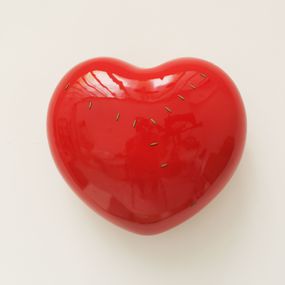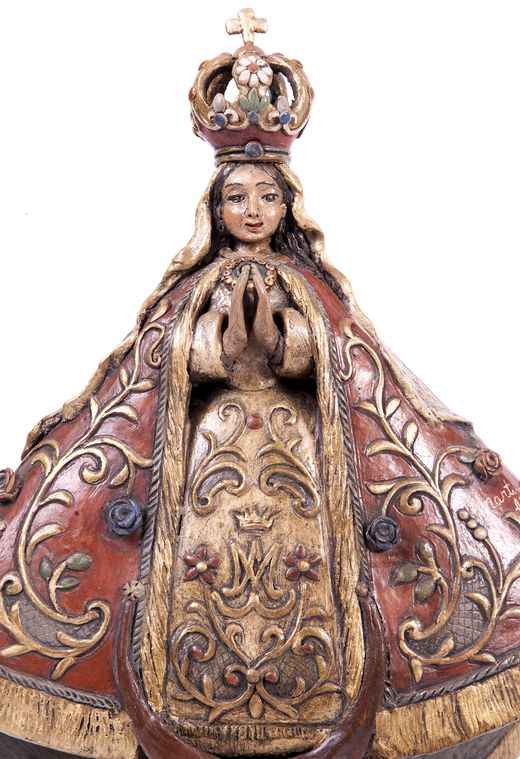A small town in Jalisco is home to Martin Ibarra. He lives across the street from the town’s sixteenth century church whose lofty wall surrounds the colonial structure. Often you will see colorful balls, earthenware virgenes, engraved with geometric designs, drying in the air on top of the wall. The pieces are the art of Martin Ibarra who supports a family of elders and youngsters from the damp clay of the surrounding hills.
Martin’s style is distinctly different from that of his now deceased father, Sixto. Martin has had big shoes to fill following in his father’s footsteps. Sixto died in 2001 and had worked with clay over 40 years, after discovering an ancient cenotaph in the foothills near his home. The workmanship and whimsical nature of the pre-conquest pottery found at the burial site inspired young Sixto to begin experimenting with the medium. His father Sixto is a local legend and it may take another two decades before Ibarra becomes as revered as his father. He has a lot to live up to as far as his neighbors are concerned.
Sixto trained his son, Martin, a highly sought-after artist in his own right, to carry on the tradition of creating his folk art in clay. Martin fabricates decorative hollow clay balls and eggs – all of which he covers with intricate motifs sketched on the surface by hand. No two pieces are exactly alike, each being formed and molded by whatever inspiration strikes him at the moment. Martin knows that a healthy sense of humor is essential for an artist working with the sometimes-capricious natural clay. During the rainy season, pieces can take two to three days longer to dry, and once his creations are hardened, he cannot be sure they will survive the firing process of the home-built wood-fired kiln.
Shrugging his shoulders when asked if he is proud that one of his burnished clay virgins adorns the home of Mexican President Fox, Martin says, “It’s nice. But what is really gratifying is knowing the person and his attitude toward the piece; that he sees it as a work of art and values it as one.”
“Competition helps me surpass myself . . . When my rivals get to the next step, we’re already two, three or more steps ahead.” He was recently called one of the three or four best artists of his genre in Mexico by Bernardo Colunga and has had his name mentioned in the same breath as regional pottery legends Jorge Wilmot and Jose Bernabe. Martin is a true folk art artist who exemplifies the best in Mexican handicrafts.
Read more

